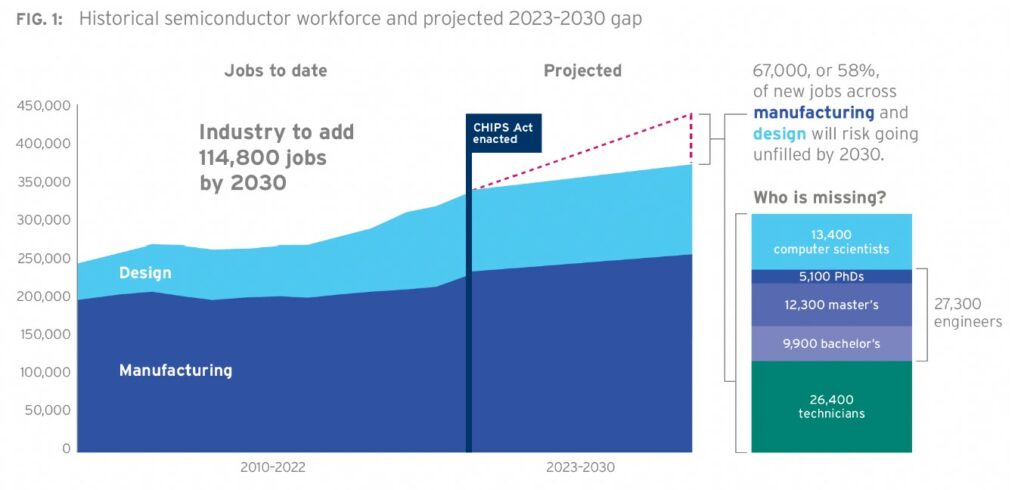US Semiconductor Industry Faces Critical Workforce Shortage
April 22, 2025
semiconductor
workforce shortage
CHIPS and Science Act
engineering talent
manufacturing
education
apprenticeship programs
The US semiconductor industry is grappling with a significant workforce shortage, driven by a lack of skilled talent, educational gaps, and intense competition, threatening its global competitiveness and ability to meet growing demand.
Challenges in the US Semiconductor Workforce
The US semiconductor industry is currently facing a significant workforce shortage, driven by several critical factors. This shortage threatens the industry's ability to meet growing demand and maintain its global competitiveness.
Key Challenges
- Shortage of Skilled Talent: The industry is experiencing a critical shortage of engineers, technicians, and machine operators. By 2029, the US is projected to face a shortage of up to 146,000 workers, including more than 50,000 engineers.
- Decline in Global Manufacturing Share: The US share of global semiconductor manufacturing has dropped from 40% in 1990 to just 12% in 2020, highlighting the urgent need for workforce development.
- Educational Gaps: Traditional educational institutions are struggling to keep pace with industry demands. Many schools lack semiconductor-focused programs, and only 3.7% of engineering graduates enter fields relevant to semiconductor production.
- Competition for Talent: Semiconductor companies are competing with industries like AI, clean energy, and cybersecurity for the same pool of skilled workers.
Efforts to Address the Shortage
- Apprenticeship Programs: Initiatives like the Growing Apprenticeships in Nanotechnology and Semiconductors (GAINS) are training workers from diverse backgrounds, including veterans and career changers.
- Federal and Industry Collaboration: The CHIPS and Science Act of 2022 has allocated over $50 billion to strengthen semiconductor manufacturing and workforce development. Partnerships with community colleges and technical schools are also being established.
- State-Led Initiatives: States like Texas and New York are collaborating with companies such as Samsung and Micron to create specialized training programs.
Future Outlook
With new fabrication plants expected to be completed by 2025, the demand for skilled workers will surge. Experts estimate that over 67,000 technical roles could go unfilled without aggressive workforce development efforts. The industry must also reshape its image to attract younger generations and emphasize the critical role semiconductors play in powering innovations across sectors.
For more details, visit the original article.
Sources
The US Semiconductor Industry Faces Labor Challenges Amid ...
With a shrinking talent pool, companies are compelled to offer higher salaries to attract and retain employees. This increases operational costs ...
How the US Semiconductor Crisis is Driving Innovation in Workforce ...
The semiconductor workforce gap is driven by several factors. Starting with a critical shortage of engineers, technicians, and machine operators.
Intel Addresses Semiconductor Workforce Shortage
Based on this forecast, 39% of chip factory technician jobs may remain vacant. Closing the talent gap is critical to the success of the U.S. ...

